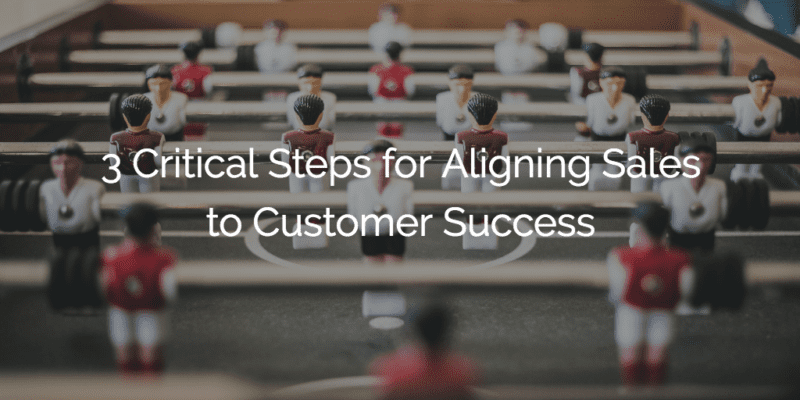Jennifer Yorke is the Managing Director, EMEA Client Success at Bazaarvoice. Bazaarvoice helps brands and retailers find and reach consumers, and win them with the content they trust. She has a passion for scaling high growth tech businesses, with a focus on international markets and the post-sales environment. Jennifer is a mentor at startup incubator Seedcamp and previously held customer success roles at Box, HootSuite, and HubSpot in London.
In traditional software sales, it was possible to build a successful company without being overly concerned with what you “threw over the fence.” Customers would often sink millions of £/$/€ and multiple years of effort into a software purchase and implementation and, as a result, were basically stuck making things work.
In fact, we often joked that, after all that money and effort, if someone complained when we rolled it out, we simply fired that person. Not so with software as a service (SaaS). In the SaaS world, our customers have choices (and power) like they’ve never had before. Switching costs tend to be much lower and, because of the subscription model, we give them the option to say “no” long before we’ve achieved our hoped-for lifetime value.
All of this makes aligning Sales and Customer Success critical. Ensuring that your entire company is aligned in the quest to deliver the desired outcome for each customer is even more important. The long-term viability of a company in the subscription economy requires execution on all three of these key revenue drivers:
- Retention
- Expansion
- Advocacy
In the past, Sales really had just one motivation—acquiring new customers at maximum financial value. In fact, there are two questions we have to ask today as we’re approaching the close of a new deal that we never had to ponder in the not-so-distant past:
- Can we make this customer successful?
- Should we maximize the value of the first deal?
If those questions were asked (and they weren’t), the answer would have been delivered in milliseconds in the form of “who cares?” to the first and a resounding “YES!” to the second. But as the saying goes, “That was then, this is now.”
In order to set our teammates and our company up for success, we have to carefully consider both questions. If not considered, one often leads to churn and the other to downsell.
As a Customer Success Manager, I remember getting a client or two that were, for lack of a better word, clunkers. I had two choices in that situation:
- Annoyance and blame
- Take corrective (and constructive) action
Despite some reputation to the contrary, I’ve actually found in my career that very few Salespeople are okay with just selling deals and not caring about what happens afterwards. Almost no one wants to set their friends and colleagues up for failure. But there is—and always will be—tension in a sales model that drives quarterly goals by rewarding results and punishing lack of results.
There’s also a lot of ignorance in our Sales organizations, especially at the top, because they grew up in a world where acquisition of new customers was virtually the only revenue driver in the business. It requires a major change of thinking to adapt to our new world, and this is one of the reasons why Customer Success truly has to start at the top (Law #1 in The Ten Laws of Customer Success). If your CEO and your VP of Sales aren’t fully bought in, success is going to be very elusive.
Why are poor-fitting clients an issue?
- They require increased time and resources in order to get them on track. This reduces the time that could be spent with other customers who could expand their software purchase and become better advocates in the long run.
- They lack advocacy and cannot be leveraged for references, case studies, or positive reviews. Your prospects are talking to your customers whether you know it or not, and poor-fitting clients can potentially pass along their sentiment to colleagues.
- They don’t contribute to expansion. Unsuccessful customers don’t buy more from you. It’s as simple as that.
- They are at risk of churning. Depending on the time it takes to break even, a client that leaves in year one could actually be a net loss to the business. Recovery of CAC is typically greater than 12 months.
Sales, like Customer Success, has a job to do and they want to do it well. Remember that a job well done for Sales means exceeding their numbers while delivering customers that have positive lifetime value to the company. These goals are 100% aligned with Customer Success!
There are a few things that can be put in place to align Sales and Customer Success for maximum output:
- Define prospect and customer segments
- Establish the Sales-Customer Success handover
- Create a feedback loop
Define Prospect and Customer Segments
Have you ever gone to a restaurant with a waitlist and had the host tell you a table would be ready in 20 minutes, but it really took 45? Did you feel happy? Likely you felt annoyed. Now imagine that the host told you the wait would be 30 minutes and it actually was 30 minutes—a much more enjoyable experience.
It’s the same for our clients. As much as we would like to devote the same amount of time and effort to each client, this is not always possible or feasible. The Sales team needs to know which segment (and subsequent service level) the prospect will receive so they can set expectations appropriately and avoid disappointment after signing.
See last month’s blog and webinar for more on the important topic of segmentation.
Establish the Sales-Customer Success Handover
I enjoy the moment in business when Sales signs the contract with a new customer. The team celebrates, the Salesperson rightfully gets accolades, and the Customer Success team gears up to deliver on the promise that was sold.
There is nothing that derails that excitement more than the question, “What are you looking to accomplish?” Universally, customers hate one thing more than anything—being asked the same question (that they’ve already answered) by multiple people in the same company. Instantaneous mood deflation!
Every Sales and Customer Success team should define and follow a pre to post sales handoff process. A typical software sales process can run from 6–12+ weeks. That’s a lot of time for discovery, which can include success metrics, stakeholder identification value drivers, and more. Knowing this information right from the start speeds up the return for the customer, which can lead to faster growth, a reduction in churn risk, or both. When key information transfers from one organization to the next, it creates confidence in the customer. Many of them live with the fear that their purchase decision is going to hurt their careers and poor handoffs will bring those fears to the surface more rapidly than any other event.
When setting up the Sales-Customer Success handoff, it’s important to remember that Sales is always going to be focused on bringing in new business. Don’t build a handover process that asks the Salesperson to fill out a four-page form. They won’t fill it out and you still won’t know what went on in the sales process.
Determine the minimum information you need to drive a successful implementation/client handover and figure out how to access the info with the help of Sales. I have had a Sales team member record the info and share it, I have had Sales and Customer Success sit down while the CSM records the info after a client signs, and I have had Sales even fill in a simple handover. There are many options, but what matters is that Sales truly understands what Customer Success needs and that Customer Success actually gets it.
Create a Feedback Loop
Customer Success has a responsibility to tell Sales, and the whole company, what a successful customer looks like. This means that the Customer Success team needs to have metrics in place to understand who, what, and how a client renews and expands.
Churn, while a critical metric, is quite the lagging indicator. Look at your customers—what stages exist for your customers in the implementation journey? Identify the trends in risky customers and back up their experience to look for signs in the implementation. Share this information with the Sales team and give guidance on how to uncover potential issues during sales discovery. A fair number of clients who would be less than successful can be righted with proper expectations set and resources accessed prior to signing a contract.
It’s far too easy to say, “We should not have signed that customer.” It’s much harder, but better, to understand why and to take steps to make those outside-the-sweetspot customers successful. More often than not, the problem can be solved by simply communicating the proper expectations and selling a higher level of services than you would for your perfect-fit customers.
Over time, a Customer Success leader should be the key person helping your company analytically determine which customers are perfect fits, which may need a different level of service to make them successful, and which you are just not ready at this time. Some of the factors might be:
- Industry
- Use case
- Discount level
- Sales rep
- Services package
- Geography
- Partner
Take this challenge seriously if you are leading a Customer Success initiative. It’s likely to be a make-or-break process for your company.
Should you find that the above doesn’t drive Sales-Customer Success alignment, there is always the option to drive behaviour via compensation. In fact, at HubSpot, the career path for sales seniority and an increase in base salary was, in part, tied to the retention rate of the salesperson’s customer base!
A strong relationship between Sales and Customer Success is the foundation for a successful customer experience. By establishing customer segments, a process for sharing knowledge from the sales process with the Post-Sales team, and by feeding back positive and negative observations to Sales, the Customer Success team will ensure that they have the best platform to drive clients to renew and expand.

